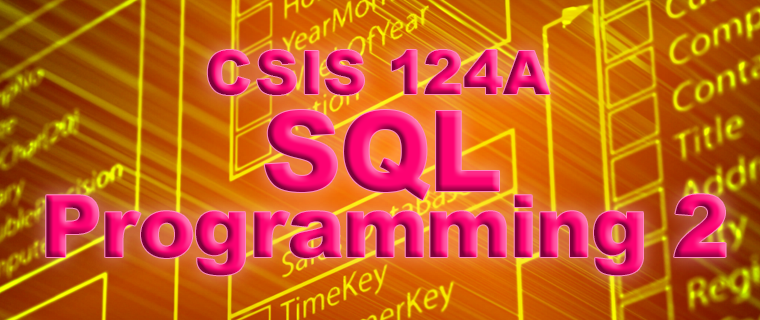Courses
Select a Course:

Course Description
This course presents advanced concepts in the SQL programming language to cover multi-table database, and advanced query options. The data definition language (DDL) elements will be fully covered, including working with Entity-Relationship (ER) diagrams and options for implementing indexes.
By successfully completing this course you will earn 3 units of college credit.
⇑ Table of Contents
Course Objectives
-
Design, code and implement base schema objects, constraints, and indexes using the data definition language elements of SQL.
-
Examine ER diagrams and translate those models into the appropriate and necessary database constructs.
-
Create programming solutions that use data structures and existing libraries.
-
Define and describe these terms: Cartesian product, cross product, cross join, inner join, outer join, left join, right join, full join, equi-join, self-join.
-
Construct table joins using the 1989 standard (i.e. traditional method) and construct table-joins using the 1992 standard (i.e. Join Method).
-
Evaluate the need for disabling/enabling constraints in conjunction with DML statements.
-
Revise and rewrite subqueries and correlated subqueries as joins.
-
Assess the need for advanced reporting features and where appropriate incorporate ROLLUP and/or CUBE group operations in a SQL program.
-
Demonstrate working effectively as a member of a team to accomplish common goals.
-
Analyze technical information, as well as listen effectively to, communicate orally with, and prepare memos, reports and documentation for a wide range of audiences.
-
Investigate and assess new sources of information and learning opportunities to stay abreast of emerging information and computing technologies.
-
List career paths related to the program of study, as well as any qualifications and/or professional certifications that may be associated with those careers.
⇑ Table of Contents
Course Learning Outcomes
-
Prepare SQL statements that will perform complex joins using data manipulation language elements.
-
Evaluate SQL commands for processing efficiency.
-
Evaluate and improve a data model using the higher-order rules of normalization.
-
Understand common uses of database triggers and stored procedures.
-
Use the data control language elements of SQL to support database administration tasks related to defining and managing user roles
⇑ Table of Contents